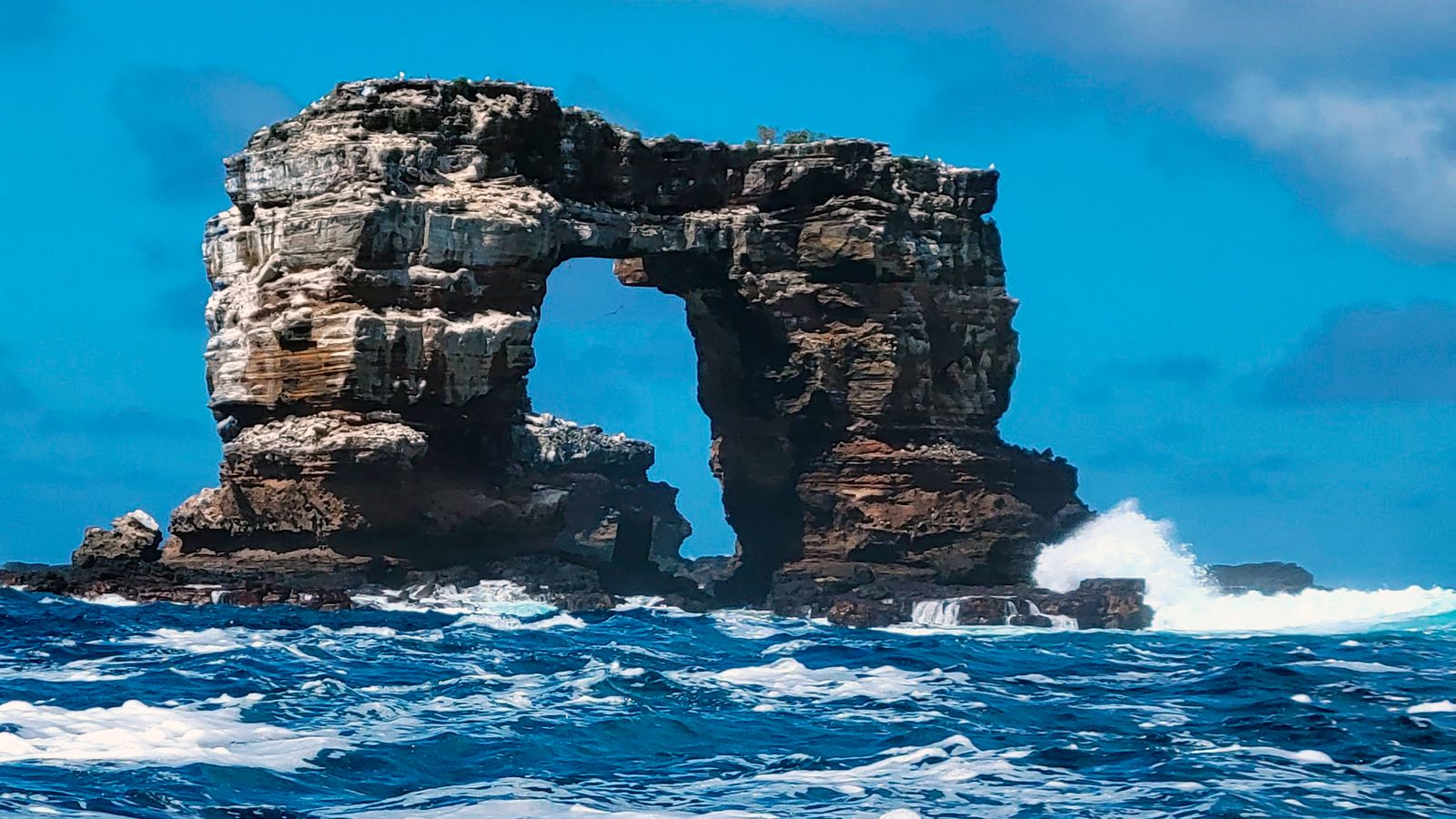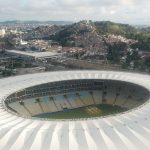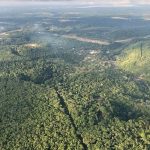The top of a famous rock formation in the Galapagos Islands, known as Darwin’s Arch, has fallen into the sea.
Ecuador’s Environment Ministry reported the “shock” collapse of the structure on Monday.
Experts are blaming stone erosion.
The formation, named after the English biologist Charles Darwin, is just off Darwin Island and the waters around it are considered to be a top diving location.
Informamos que hoy 17 de mayo, se reportó el colapso del Arco de Darwin, el atractivo puente natural ubicado a menos de un kilómetro de la isla principal Darwin, la más norte del archipiélago de #Galápagos. Este suceso sería consecuencia de la erosión natural.
📷Héctor Barrera pic.twitter.com/lBZJWNbgHg
A tweet from the Environment Ministry translates: “We inform that today, May 17, the collapse of the Darwin Arch was reported, the attractive natural bridge located less than a kilometre from the main island Darwin, the northernmost of the archipelago of #Galápagos . This event would be a consequence of natural erosion.”
The structure stands 43m (141ft) high at its two end “towers”. The middle section joining them, often called a “natural bridge”, has now crashed into the waters below.
Washington Tapia, director of conservation at Galapagos Conservancy, said: “Obviously all the people from the Galapagos felt nostalgic because it’s something we’re familiar with since childhood, and to know that it has changed was a bit of a shock.”
But he added: “However, from a scientific point of view, it’s part of the natural process.
“The fall is surely due to exogenous [external] processes such as weathering and erosion which are things that normally happen on our planet.”
The Galapagos Islands is a volcanic archipelago in the Pacific Ocean, 600 miles (1,000km) off the coast of mainland Ecuador.
They are considered one of the world’s best destinations for wildlife viewing and their unique flora and fauna are famed in part for inspiring Charles Darwin’s theory of evolution.
The naturalist visited in 1835 and tourists from across the world have followed in his footsteps to see the islands’ biodiversity.






















